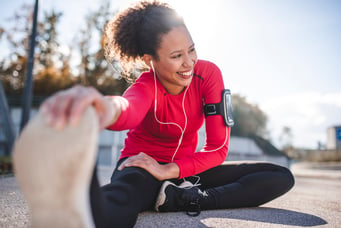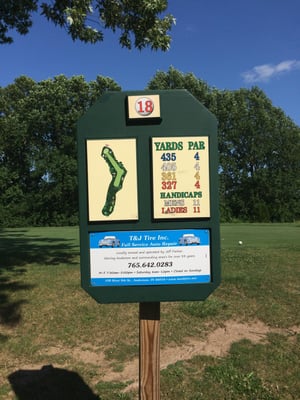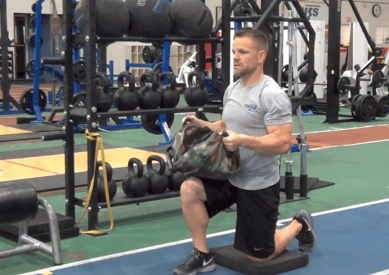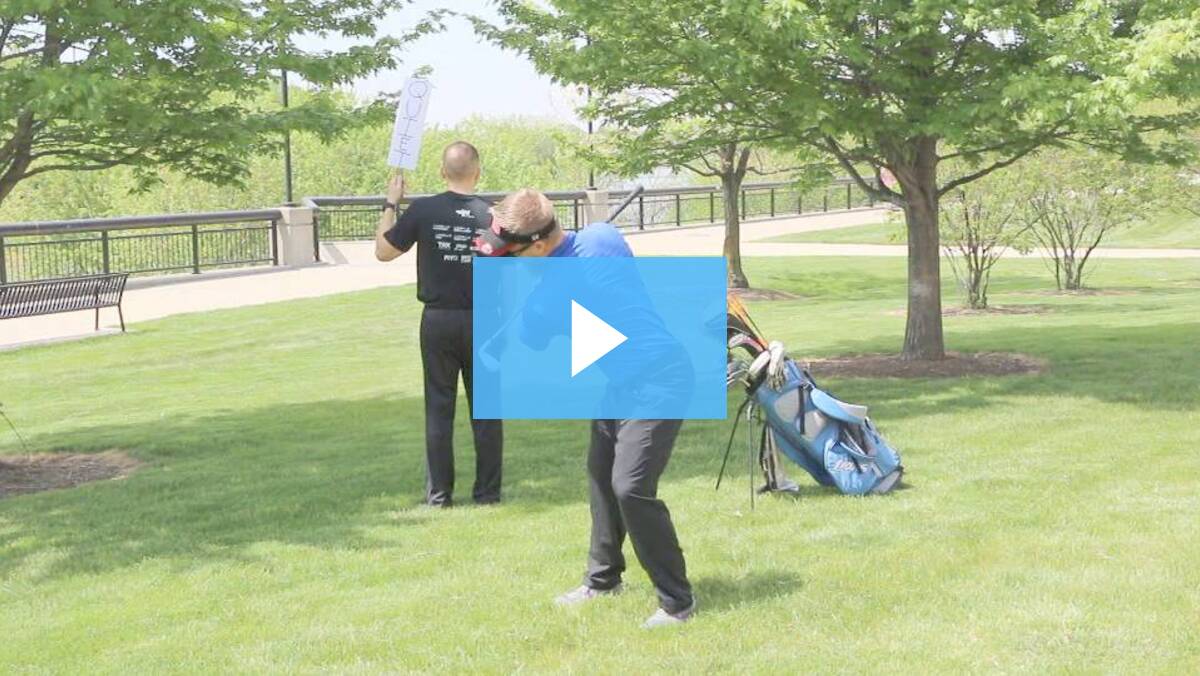 Chances are if you are like me, you have been told your whole life, “Make sure you’re stretching, it’s important!” But to many, the first thought that pops into their head when they think about stretching is, “Why?” And that is a very understandable response because stretching can involve a lot of discomfort (in the beginning) and to some, it might even cause a bit of pain. But there certainly is a method to the madness, and a reason why stretching is a vital component of your fitness program and, ultimately, your lifestyle.
Chances are if you are like me, you have been told your whole life, “Make sure you’re stretching, it’s important!” But to many, the first thought that pops into their head when they think about stretching is, “Why?” And that is a very understandable response because stretching can involve a lot of discomfort (in the beginning) and to some, it might even cause a bit of pain. But there certainly is a method to the madness, and a reason why stretching is a vital component of your fitness program and, ultimately, your lifestyle.
What Is Stretching?
For starters, I’ll briefly describe what stretching is. Stretching can be somewhat of an umbrella term in that a lot of day-to-day activities do in fact involve some sort of stretching to some degree. In fact, every time your muscles contract there is a stretching and a shortening occurring inside the muscle to produce force. But the type of stretching I am talking about today is more deliberate and the kind of stretching most people think of when they hear the word “stretching”; think bending over and touching your toes, for example.
Stretching is important because it is all about increasing your range of motion and flexibility in the hope that doing this can lower your risk for muscle and joint injury or strains. The better our bodies are able to move, the lower the chance is for a muscle strain or getting injured when caught in an awkward position. Stretching both statically and dynamically is known to reduce injury risk.
Types of Stretching
The main types of stretching are active, passive, dynamic, and proprioceptive neuromuscular facilitation (PNF) stretching.
- Active stretching is the main one people think of when they are told to stretch, and this type of stretching can be really good for isolating certain muscle groups. A big part of active stretching is the fact that you yourself are the one stretching out your muscles; there is no outside intervention.
- Passive stretching is similar to active stretching in that it can be isolated to certain muscle groups, but this type normally has a partner assisting in the stretch to perhaps reach a little bit more range of motion. For example, as you can see in this picture, the person on the ground is relaxed and her partner is the one actively applying stretching force to her leg, ideally achieving more range of motion.
- Dynamic stretching is the next variation. In this type you have more of a momentum-based approach. What I mean by that is that a big part of it is using body movement and motion of the limbs themselves to achieve a change in range of motion. For example a foundational dynamic movement is high knees. This explosive movement of having knees come up as high as they can go will create range of motion throughout the legs. The foundational piece of this type of stretching is an idea of the stretch shortening cycle, which is a concept that as muscles contract and lengthen, they then shorten, and as a result are ready for activity.
- Proprioceptive neuromuscular facilitation, or PNF for short, is last but not least. PNF stretching is essentially the technique of contracting and relaxing the muscle in order to increase range of motion. The rationale behind it is that after contracting a specific muscle, the signals that lead to a muscle resisting stretching are used up, and by following up the contraction immediately with a stretch, the muscle is more likely to achieve a higher range of motion.
Incorporate Stretching into Your Workout
After seeing these different types of stretching in more detail, the last thing to consider is, “Is this something I should incorporate into my exercise routine?” The answer is a resounding YES! Stretching has been researched and studied and has been shown to decrease the chance of injury and increase performance. So the next time you throw on your running shoes and get ready to hit the ground running (literally), take a second to do a light stretching warmup. Your body will thank you down the road (also literally)!
This blog was written by Ricky Rocha, Health Fitness Specialist. To learn more about the NIFS bloggers, click here.


 I celebrated my 40th birthday almost a year ago but postponed writing the “I’m 40 now” blog until now, mainly because it is a bit played out. But more importantly, I wanted to see what this 40 thing was all about before writing about it.
I celebrated my 40th birthday almost a year ago but postponed writing the “I’m 40 now” blog until now, mainly because it is a bit played out. But more importantly, I wanted to see what this 40 thing was all about before writing about it. Check your expectations/mindset. Although it can be hard to handle at times (believe me), physical abilities are going to change and it is important to evaluate and adjust your expectations. This will help when you are faced with a physical challenge that you might have formerly handled pretty easily, to determine whether you should attempt it or live to fight another day. Your mindset is your story; now it’s just the next chapter. Negative self-talk about what you used to be able to do will not help in moving forward positively. I have found it helpful to manage the minimums and find that new normal. This will keep you safe both physically and mentally.
Check your expectations/mindset. Although it can be hard to handle at times (believe me), physical abilities are going to change and it is important to evaluate and adjust your expectations. This will help when you are faced with a physical challenge that you might have formerly handled pretty easily, to determine whether you should attempt it or live to fight another day. Your mindset is your story; now it’s just the next chapter. Negative self-talk about what you used to be able to do will not help in moving forward positively. I have found it helpful to manage the minimums and find that new normal. This will keep you safe both physically and mentally.
